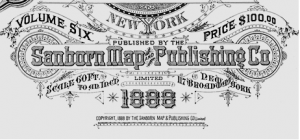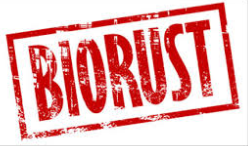Embroidery Challenges
Greetings everyone,
It is hard to believe First Quarter, 2014 is just about in the bag. And what a quarter it has been. I was fortunate enough to travel to both Long Beach, California for the ISS Trade Show as well as Birmingham, England for the United Kingdom version of ISS at NEC Hall. After the Birmingham show I was lucky enough to spend two days in London as the consummate tourist. If you have never been, put London on your bucket list, what a great city.
This month I want to talk to you about what DOES NOT WORK well for embroidery. Every day at Qdigitizing we are presented with orders that typically will not embroider well. It is not that we don’t want to do the work, believe me we do. But some designs simply are not meant for embroidery. These fall in to 5 major categories shown below.
Too Much Lettering in Too Small a Place– We really do get logos like this all of the time with requests to fit designs like this in areas as small as 2.5 inches. Part of our role at Qdigitizing is to train our customers as to what will and what will not work. While this might be an extreme example it happens all of the time. Lettering is particularly challenging because everyone know what a letter looks like and even one stitch out of place can make a letter look wrong. Certain substrates will accept small lettering better than others but generally speaking 4mm is the smallest Arial (sans serif) letter we can program. Smaller than that and your machine will not form quality stitches or the holes in letters like A, B, D, O, P, Q, R, (for capital letters) a, b, d, g, o, p, q, s (for lower case) will fill in and look like blobs.
Blending – Embroidery is a solid medium and we cannot blend threads to copy the effect shown below. Can we fake it? Yes, but whether or not the end product will be accepted is entirely subjective and depends entirely on the expectations of the end user. It should be understood that effects like this are meant to mimic “reflectivity.” Embroidery thread by its nature will shine and reflect light so while this effect may be necessary in print, in embroidery this may happen all by itself.
Transparent Effects – Since thread is opaque you cannot see something that is on a layer behind the thread. Because of that images like this are virtually impossible to emulate in embroidery. Objects behind windows are also very difficult.
Distressed effect – Design’s like BIORUST below do not work well for embroidery. Needle and thread do not have enough resolution to duplicate this effect.
Logo’s on hats – In general, the maximum height for a hat design is 2.25” tall. On some machines you can push this to 2.5” but I promise you, whenever you push the extreme limits of hat embroidery you are asking for trouble in the form of damaged product and broken machines. Designs like this are beautiful but it is not friendly to cap embroidery. There is too much small lettering in too small of a space to allow for quality embroidery. Qdigitizing is presented designs like this for hat embroidery all of the time and we are put in the position of being the “bad guy” because we have to say “no.” We don’t say no because we don’t want the work. We are saying no because we want you to be able to produce a quality product for your customer.

The question then might become, “How can we make this work?” For this design, the answer is to delete the outer ring and small lettering. The more inspired companies have multiple versions of their logos. These companies have been down this path and at some point someone has explained to them why their logo will not work on a cap. You can be the consummate professional if you can understand the limitations of the medium are and offer them options. You should explain to the end user why the design will not work and the advantages to simplifying a design like this. You may earn the opportunity to sell more product also. Sell them on putting the “full logo” on something like a jacket or polo shirt but the simplified logo on a hat. In the end you will sell a superior product. You customer will be happier and your opportunity to earn more sales will increase dramatically. If you dig your heels in and insist on fitting this full logo on a hat you will wind up with a substandard product and most likely a large number of damaged hats.
The only absolute I have run across in commercial embroidery is there are no absolutes. There are ways to simulate blends and given enough room you can program a design like the ABC logo (above) to look very much like the art. You can even find “panel programs” for embroidering large designs on to hat panels. The sewn panels are then sent to the vendor who turns the panels into finished hats. The main point is, if you see logs like these it is in your best interest to ask us before you commit to your customer. You will be in a much stronger position if you get in front of production issue instead of making excuses after the fact.
If you would like to ask me a specific question about commercial embroidery or embroidery digitizing please email me at service@qdigitzing.com. I will reply directly or include your question as a future blog topic.
Thank you,
Steve Freeman
Managing partner
Qdigitizing.com




Steve:
This was excellent to receive. I will keep this on file to share with those very customers that think everything can be embroidered.
Much appreciated
Thanks
Elaine
As an embroiderer your info was much appreciated. It is amazing how many folks I turn down because of the exact things you mentioned. To much in to little space!
Thanks to you I have better insight on what can and can’t be done.
Thanks
Steve: Thank you so much for this article. I’m probably one of those guilty of asking to put too much in a tiny space, ONLY because the client insists I ask. Your explanations are terrific as are the examples. With your permission, I would like to use most of this article and pictures as a post on our website and facebook pages. Qdigitizing is our go to digitizer. Thanks for amazing work!
Hi Arlene,
Feel free to use all or part as you see fit.
Usually I do not get replies to my post but this time I received three in a couple of hours. I think I have struck a nerve and I am inspired to expand on this topic next month.
Steve
Good morning,
I am pleased you found this useful. If you have any thoughts or suggestions for future topics please let me know.
Steve
Hi Elaine,
Thanks for dropping me a note. This topic can be “touchy” sometimes as we wall want to be as customer friendly as possible. But as I stated in my blog, part of our role is to advise when something will not work well. In the end, we will all have happier customers if we understand and can explain the limitations of the embroidery medium.
Steve
I am sure I am guilty of some of this. I really like this article and am going to print it out so I have it to show to customers who need every detail on their design. (I should say they think they need every detail.) Thank you so much.
Thank you. I am saving this and printing it out to show my customers.
Our shop is growing by leaps and bounds and this partly due to the amazing and reasonably priced service you provide! This information can to us at a perfect time as I have a customer now that wants his new design on a cap and it will not work! Thank you so much for your dedication to the craft!
Hi Olivia,
Thank you so much for such a great compliment. We really appreciate it.
Steve